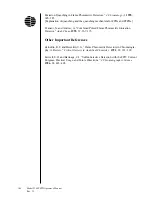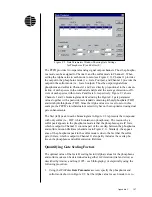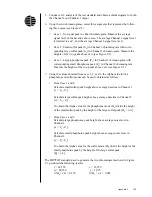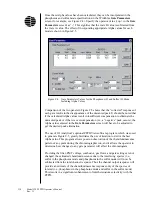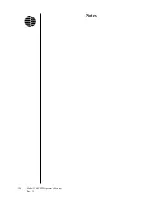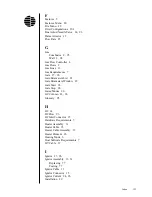
114
Model 5380 PFPD Operator’s Manual
Rev. 3.1
ADC Noise
The ADC (0–10 V input) used in the Model 5380 PFPD has 16 bits of resolution
with an ADC count increment of 153 µV. Noise associated with the ADC usually
has less than 1 bit of resolution. Caution must be used because an apparent “noise
signal” of one ADC count may be the result of the signal crossing back and forth
across a single ADC count. For example, if the ADC count corresponds to 306 µV,
then an input signal change from 305 µV to 306 µV will cause the converted value
to increase by one ADC count (153 µV) when actually the signal changes by only
1 µV. This apparent stepwise noise is due to limited quantization (resolution)
capacity of the ADC.
DAC Noise
The DAC (0–1 V output) used in the PFPD also has 16 bits of resolution, with a
DAC count increment of 15.3 mV. Generally, noise associated with the DAC has
less than 1 bit of resolution. Actual system noise may not be observable due to the
limited output resolution capability of the DAC. If the digitized signal is less than 1
DAC count and the signal crosses the DAC output level, the DAC will output the
change as a full DAC step.
Optimizing Range and Attenuation Settings
Range and attenuation values set for the PFPD must be consistent with the noise
level of the application being run. Failure to set these signal scaling factors appro-
priately may result in artificially high background noise or insufficient dynamic
range for signal output. Table D.1 and Figure D.1 show the effects of changing
range (100, 10, or 1) and attenuation (1–256) settings on output signal resolution.
Note that for each range-attenuation setting the maximum number of DAC steps is
65535 (2
16
- 1). Therefore, as range and attenuation decrease, the resolution of each
DAC step increases (see FigureD.1).
As the noise level decreases, it is necessary to use lower attenuation and/or range
settings to incorporate sufficient resolution to accurately detect noise. These
settings should be adjusted so that at least 5 DAC counts (greater than 75 µV) of
noise are incorporated in the detector baseline (see Figure D.2). This will ensure
that the observed noise is real and corresponds to actual PFPD noise.
An example of the effect of changing the attenuation from 256 to 16 (range 100)
on noise resolution is shown in Figure D.2. At attenuation 256 (shown in the first
two segments of the top panel and throughout the bottom panel), the resolution is
insufficient to accurately reflect the system noise. Much of the apparent “noise
signal” is actually oscillation between sequential DAC count levels. As attenuation
decreases from 256 to 16, the DAC resolution increases and the peak-to-peak noise
covers an increasing number of DAC steps, as shown in the upper panel of Figure
D.2. In order to obtain at least 5 DAC levels, attenuation 32 should be selected.
Содержание 5380
Страница 89: ...84 Model 5380 PFPD Operator s Manual Rev 3 1 Notes...
Страница 95: ...90 Model 5380 PFPD Operator s Manual Rev 3 1 Notes...
Страница 99: ...94 Model 5380 PFPD Operator s Manual Rev 3 1 Notes...
Страница 107: ...102 Model 5380 PFPD Operator s Manual Rev 3 1 Notes...
Страница 117: ...112 Model 5380 PFPD Operator s Manual Rev 3 1 Notes...
Страница 125: ...120 Model 5380 PFPD Operator s Manual Rev 3 1 Notes...
Страница 133: ...P O Box 9010 College Station TX 77842 9010 Tel 979 690 1711 FAX 979 690 0440 www oico com...

